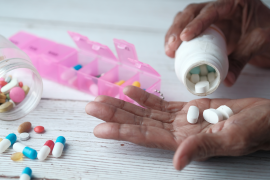In September, during the ongoing discussion about drug prices, the Food and Drug Administration (FDA) and Congress raised concerns about patents. To date, the policy conversation has largely focused on reforming the payment system to address the rising costs of drugs, but now patent system abuses, another driver of prescription drug prices, has come into focus. Understanding the evidence behind the discussion is imperative to finding meaningful policy solutions.
In three separate letters to the U.S. Patent and Trademark Office (PTO), the FDA as well as bipartisan members in both chambers of Congress raised concerns about the quality (or inventiveness) of drug patents, manufacturer behaviors that block or delay competition (e.g., continuation applications, evergreening, and product hopping), and the recent PTO policy that limited the ability of the public to challenge weak drug patents. From these letters, it is clear there is consensus that the patent system is being misused to block or delay competition, the volume and quality of patents is concerning, and the PTO can leverage its existing authority to reign in abuse.
Patent System Misused to Block or Delay Drug Price Competition
Several studies and congressional investigations have pointed to drugmakers’ use of the patent system to extend monopolies, increase prices, and delay generic or biosimilar competition. One study found that of roughly 100 bestselling drugs, nearly 70 percent obtained an additional patent to extend its monopoly period at least once; nearly 50 percent extended it more than once. An analysis of the 10 best-selling drugs of 2019 found that on average these drugs held more than 69 patents with 37.5 years of patent protection, well past the 20 years of patent life intended by Congress. Furthermore, the prices for these drugs increased 71 percent over the previous five years.




